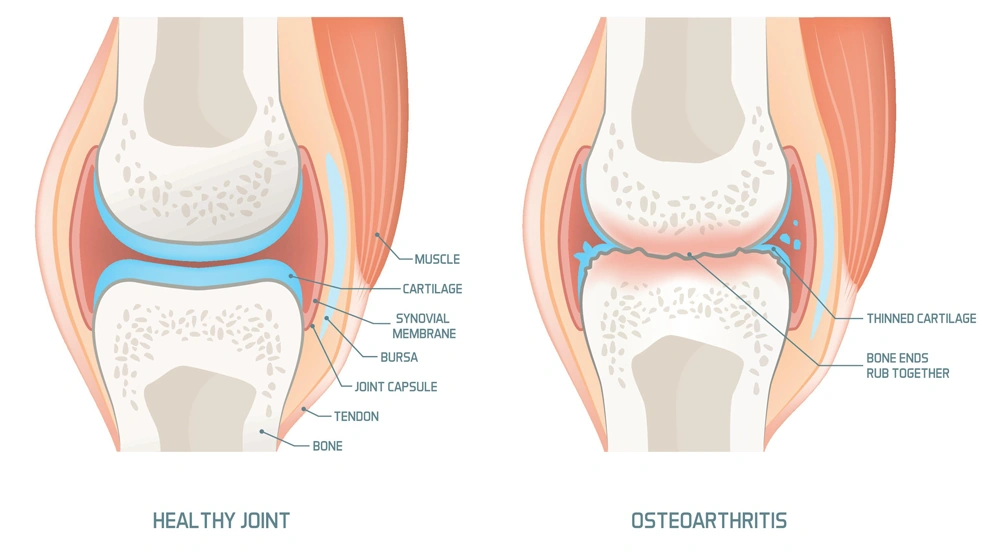Hey friend, let’s cut to the chase. Osteoarthritis (OA) isn’t just “old‑age creakiness.” It can bring chronic pain, limit the things you love, and even raise the odds of heart disease, diabetes, or mood disorders. The good news? Most of those risks are within your control. Stick with me for the next few minutes and you’ll walk away with clear, doable steps to protect your joints and your overall health.
Quick Answers Overview
Is OA a health threat? Absolutely. When cartilage thins and bones rub, pain, inflammation, and reduced mobility follow – and those side‑effects can snowball into bigger health problems.
Who’s most at risk? Age, excess weight, genetics, past joint injuries, and nutrition gaps (both over‑ and under‑nutrition) are the biggest drivers.
What can you do now? Manage weight, stay active, and fix any nutritional deficiencies. Those three moves can trim your risk by up to 30 % and slow OA’s progression.
Want to dig deeper into the hidden culprits? Check out the osteoporosis hidden factors page for more insight.
Core Biological Risks
The body’s “wear‑and‑tear” machine kicks into high gear as we age. Cartilage, that slick cushion between bones, gradually loses its resilience. When it thins, you get:
- Joint pain that lingers after a day’s activity.
- Low‑grade systemic inflammation – a silent fire that can affect organs far from the joint.
- Genetic predisposition – studies show roughly half of OA risk is inherited (Healthline, 2023).
Lifestyle and Environment
Even if your genes hand you a “welcome mat,” lifestyle choices can either tighten or loosen that mat.
Obesity & Excess Weight
Carrying extra pounds is like adding a backpack full of bricks every step you take. Your knees and hips experience 3‑4 times the normal load, and fat tissue releases inflammatory cytokines that aggravate cartilage loss (Healthline, 2014).
Repetitive Joint Overuse
Jobs or hobbies that involve constant bending, lifting, or squatting stress the joint’s ligaments and cartilage. Over time that stress adds up, turning a “minor ache” into a full‑blown OA flare.
Malnutrition & Undernutrition
When your diet lacks quality protein, vitamin D, calcium, or omega‑3s, the muscles that support your joints weaken and the cartilage loses its building blocks. In other words, your joints are left “naked” and vulnerable (NIAMS, 2025).
Read more about how a combination of excess weight and poor nutrition can double‑dip on risk on the obesity and malnutrition page.
Domino Effect of OA
Think of OA as the first domino in a line of health challenges. When one falls, the rest follow.
Heart Disease
Reduced activity means more weight, higher blood pressure, and a greater chance of clogged arteries. A 2024 study in RMD Open found OA patients had a 2.5‑fold higher risk of cardiovascular events.
Metabolic Disorders
Inactivity plus inflammation fuels insulin resistance. The same Swedish cohort that linked OA to heart disease also reported a near‑tripling of diabetes risk among participants with OA (HealthDay, 2024).
Mental‑Health Impact
Living with chronic pain can feel like carrying an invisible backpack of anxiety and depression. Roughly 30 % of OA patients report mood disorders, according to the CDC.
Multimorbidity – The “Sickest Group”
Researchers matched nearly 10,000 Swedes with OA to people without it. Those with OA were 2.5 times more likely to belong to the “sickest” multimorbidity tier, meaning they developed several chronic illnesses together (HealthDay, 2024).
Obesity, Malnutrition & OA
Let’s talk about the double‑edged sword of too much and too little.
Why Excess Weight Hurts
Beyond the mechanical stress, fat tissue secretes adipokines (like IL‑6 and TNF‑α) that keep inflammation humming even when you’re at rest.
When Undernutrition Joins the Party
Low protein intake leads to muscle wasting, which means less support for your joints. Vitamin D deficiency leaves cartilage brittle, and without enough omega‑3s, the “anti‑inflammatory” side of your diet stays quiet.
Practical Nutrition Strategies
| Goal | Food Examples | How It Helps OA |
|---|---|---|
| Anti‑inflammatory | Fatty fish, walnuts, berries | EPA/DHA lower cytokines |
| Muscle‑preserving | Lean poultry, legumes, Greek yogurt | Supports joint‑surrounding muscles |
| Bone & cartilage health | Fortified milk, kale, tofu | Vitamin D & calcium for cartilage |
| Weight control | Whole‑grain carbs, fiber‑rich veggies | Satiety, less joint load |
If you’re curious how poor nutrition can directly impact daily living, the malnutrition quality of life article dives deeper.
Evidence‑Based Ways to Lower Risks
Weight Management
Losing just 5‑10 % of body weight can slash knee‑OA pain by up to 30 % (NIAMS, 2025). Aim for 150 minutes of moderate cardio each week plus 2‑3 strength sessions.
Targeted Exercise & Physical Therapy
Think of your muscles as the “shock absorbers” for your joints. Strengthening the quadriceps, hamstrings, and core reduces the load on the knees and hips. Aquatic classes are a gentler option that still builds endurance.
Nutritional Interventions
Maintain serum vitamin D levels of ≥ 30 ng/mL – research links that threshold to slower cartilage loss. A daily 1‑2 g omega‑3 supplement can ease joint pain for many people (Healthline).
Medical & Surgical Options
- NSAIDs or topical analgesics for flare‑ups.
- Viscosupplementation (hyaluronic acid injections) – modest pain relief for some.
- Joint replacement – considered only after conservative measures have been exhausted.
Decision‑Tree Snapshot
Step 1: Are you over 65 or have BMI ≥ 30? → Start a weight‑loss & activity plan.
Step 2: Persistent joint pain > 3 months, limiting daily activities? → Schedule physical therapy.
Step 3: Pain still > 5/10 despite PT & meds? → Discuss injections or surgical evaluation with your doctor.
Real‑World Stories
Mike, 58 – Lost 25 lb, Walks Pain‑Free
Mike was a construction foreman who spent his life lifting heavy materials. By his late 50s, his knees were screaming. He swapped his daily soda for water, joined a local “Walk‑and‑Talk” group, and shed 25 lb in four months. Today, he can chase his grandkids without wincing.
Linda, 73 – Battled Malnutrition, Regained Strength
Linda’s appetite had dwindled after her husband passed. A dietitian discovered she was getting less than 0.8 g protein per kg body weight. After adding protein‑rich soups, fortified milk, and a daily omega‑3 capsule, her grip strength improved, and her knee pain decreased noticeably.
Your Personal Action Plan
30‑Day Jump‑Start Planner
| Day | Action |
|---|---|
| 1‑3 | Record current weight, diet, and pain level (0‑10 scale). |
| 4‑10 | Swap sugary drinks for water; add two servings of fish or plant‑based omega‑3 sources. |
| 11‑20 | Begin a 10‑minute daily walk plus seated leg raises (3 sets × 10 reps). |
| 21‑30 | Review progress; if pain > 4/10, schedule a physical‑therapy consult. |
When to Call a Professional
- Joint pain > 5/10 that lasts more than three weeks.
- Sudden swelling, locking, or a “catch” sensation.
- Falls or increasing balance problems.
- Any new mood changes—pain can tug at your emotional well‑being.
Wrapping It All Up
Osteoarthritis health risks may feel daunting, but they’re not set in stone. By focusing on three pillars—weight control, smart nutrition, and regular movement—you can dramatically lower the chance of pain, disability, and the cascade of other chronic illnesses. Remember, every small step counts, and you don’t have to walk the road alone. If you’re ready, grab the 30‑day planner, explore the linked articles, and start giving your joints the love they deserve.


















Leave a Reply
You must be logged in to post a comment.